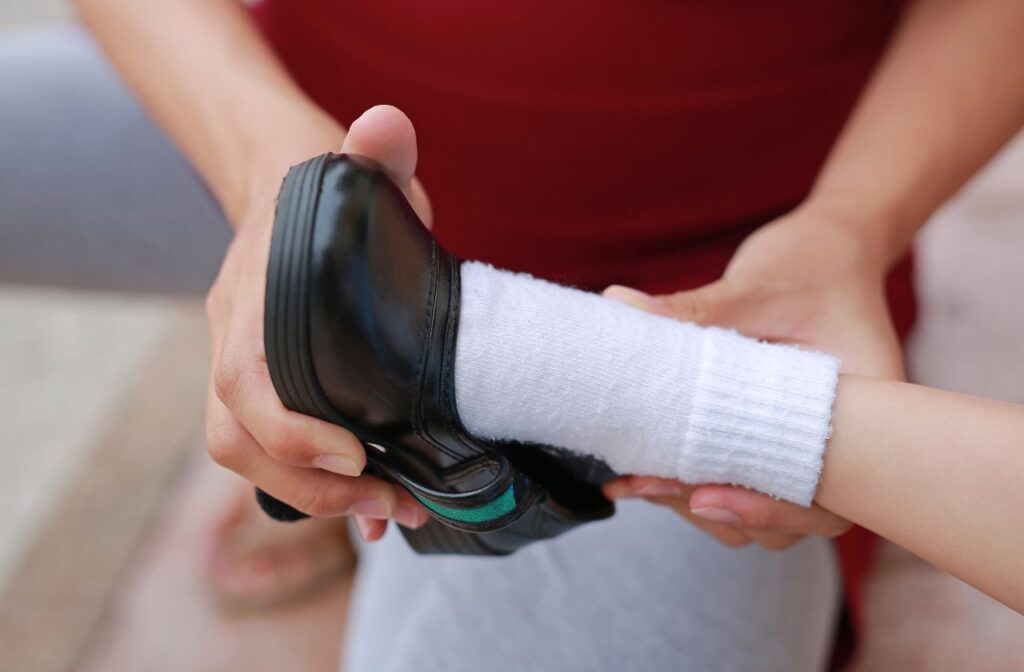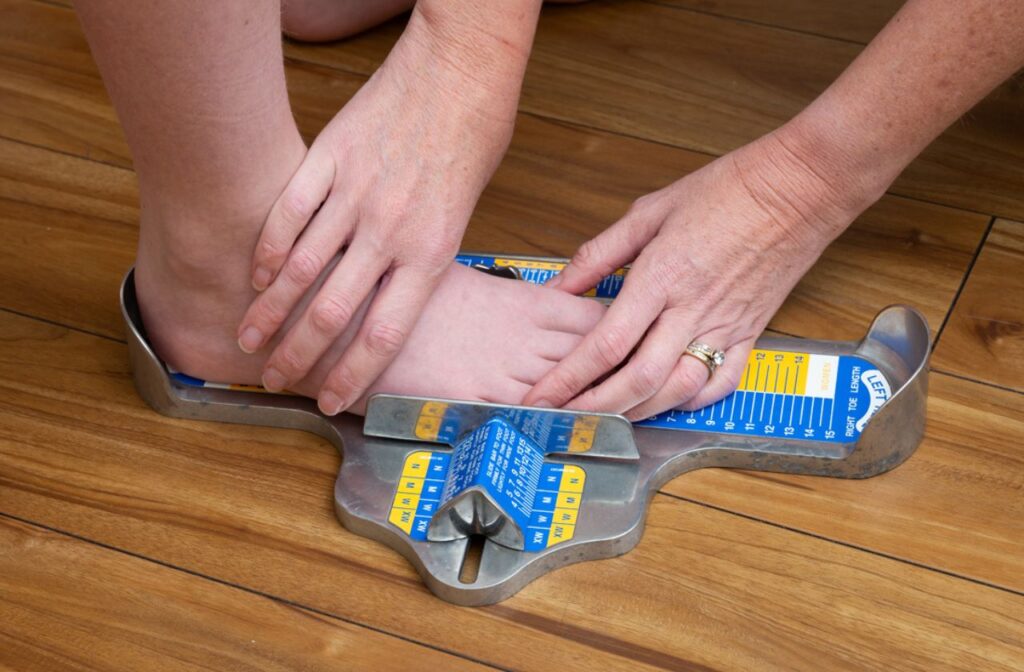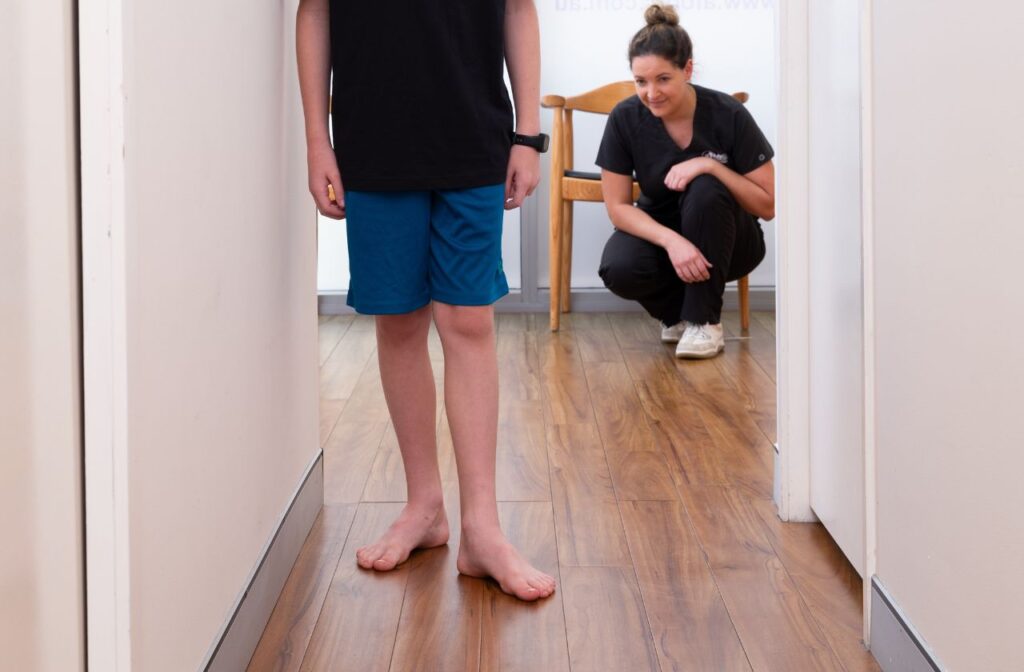Choosing the right school shoes matters because school shoes have to support and protect your child throughout their busy day.
Your child will wear school shoes for a minimum of 35-40 hours a week. Shoes that support good foot function and are well-fitted can reduce how tired your kids feet and legs get after a long day of work and play. A large number of podiatry problems in adulthood are caused by ill-fitting footwear in childhood.
Here are some tips from a podiatrist for helping you choose the best school shoes.

Tips for before you shop
- Take your child with you – your child needs to try on their school shoes so they can tell you if the shoes feel comfortable. You will be able to see if they fit the natural shape of their feet or rub in any places.
- Take school socks with you – this way you know everything fits well together.
- Check the school’s shoe regulations – some schools will enforce a stricter dress code and only allow full black (or brown) leather shoes, while others will allow kids to wear nearly any type of enclosed shoe.
- Shop in the afternoon – feet can slightly swell throughout the day. This makes them bigger. You can allow for this by shopping in the afternoon.
- Think about activity levels – if you have a very active or sporty child it may be best to get a runner style shoe (if the dress code allows). Lots of children wear running shoes as their main school shoes.

Features to look for when choosing school shoes
Where possible, always have your shoes professionally fitted. Here are the features to look for to determine the shoes that will best support your children’s feet throughout the year.
Good school shoe features:
- A firm heel counter – the part of the shoe that encloses the heel needs to be strong. If you can push it in with your thumb the heel counter is too weak or worn out. Don’t ‘slip on’ school shoes as it wears down the strength of the heel counter faster.
- Adjustable fastenings (laces/velcro) – the fastenings allow us to control the fit of the shoe. Laces and velcro give the best control.
- The right length – the toe box is where you check for sufficient room and length, based on the longest foot and longest toe. General consensus is to aim for a thumb width from the end of the longest toe to the end of the shoe. Too short will cramp the toes and too long will lead to the foot slipping.
- The right width – make sure you are getting the correct width by running your fingers along the sides of the shoe. Look for any bulging or tight spots.
- Ankle support – the height of the shoe around the ankle should sit comfortably below the ankle bones (malleoli).
- Protective toe box – the toe box helps protect the toes, so make sure it doesn’t bend easily inwards when pressed on.
- Strong, reinforced shank – the shank runs through the middle of the sole of the shoe. It provides stability and durability to the shoe. Check the strength by trying to bend the middle of the shoe.
- Flex at the toes – the soles need to bend where our foot does.
- Comfortable and removable insoles -if your child needs orthotics at any point, they can easily replace the current innersole without needing new shoes.
- Check for irritating seams – we don’t want them to rub on toes or heels.

How often should school shoes be replaced?
Depending on your child’s age, you will be replacing shoes at different rates. Children’s feet grow in spurts; expect these (average) shoe size changes:
- The 2 to 3-year-old: Grows one-half shoe size every four months
- The 3 to 4-year-old: Grows one-half shoe size every four to six months
- The 4 to 8-year-old: Outgrows shoes every six months
- The 9 to 12-year-old: Outgrows shoes every six months to 12 months
Keep in mind that just because your child’s shoes still “fit” they may not still be structurally sound. Replacing around six months is often sensible as your child will have worn them for around 700 hours by then.
How can a podiatrist help?
A podiatrist can help with choosing school shoes. If your child is experiencing any pain, redness or skin irritation it is important to get it checked out by a podiatrist. A poorly fitted shoe can lead to more serious problems later down the track. Sometimes uneven wear on your child’s shoes might be the first sign that your child might benefit from a visit to a podiatrist. A podiatrist can also help your child if they complain of recurrent tripping/falling or pain in their feet or legs.
Book your appointment with one of our podiatrists to discuss your child’s foot health today.


